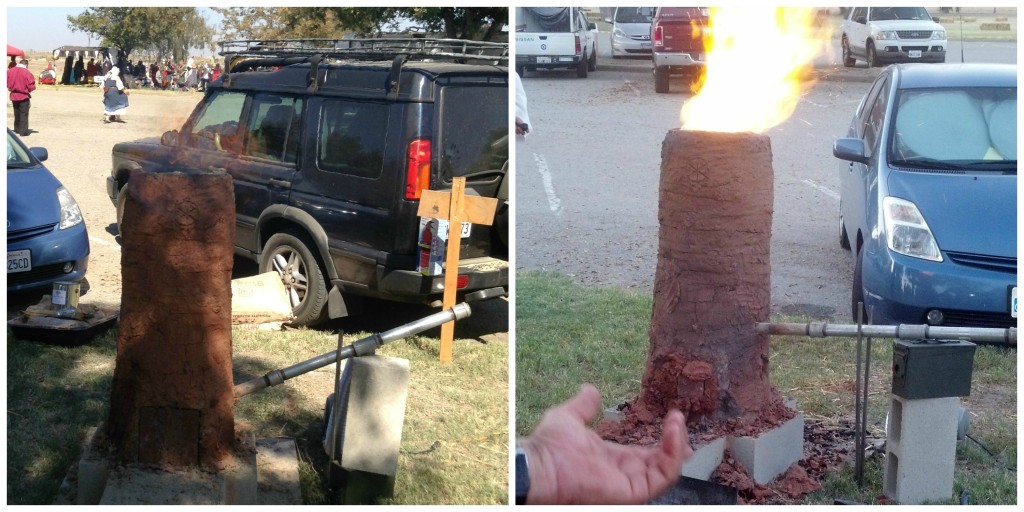And last time we asked the question – but what about the iron smelting?
I was delighted to hear that there was going to be an iron smelting furnace just a hundred yards from my shop at Great Western War. It meant that I could go by a couple of times a day to watch it being built and with any luck I would also be able to be there when the furnace was opened. I have been to events with smelting furnaces before, but this was just so darn convenient, and I was determined to take advantage of it!
So exactly what is a smelting furnace? Well it is the furnace that you use to melt the metal out of metal bearing ore. In this case, the furnace was being used to melt the iron out of iron ore.
Now I have to admit, I have not spent any great amount of time studying ore furnaces. They require a considerable amount of heat, and therefore a considerable amount of fuel and the proper amount of air flow. Historically they come in many different sizes and forms and people who understood the magic of creating and working metal were held in serious esteem.
I remember a number of years ago there was considerable excitement over the discovery of blast furnaces for producing high carbon steel in Sri Lanka. The very cool thing about these furnaces was that they used the monsoon winds to provide the needed draft for the furnaces…in the first millennium AD. That’s right! While most people were frantically pumping on double bellows systems to make their furnaces work, these folks were letting Mother Nature do the work for them. They were producing monumental quantities of metal, for the time frame.
But getting back to the project at hand, the basic needs are a furnace, fuel, iron ore and a reliable source of air flow. Obviously, the first step is creating the furnace. In the case of this temporary furnace, a combination of fire brick and clay were used to create the basic shape. The form of this furnace is basically a chimney filled with LOTS of charcoal (the real stuff, not charcoal briquettes), and iron ore, and using an electric blacksmith’s blower to provide the air flow to make the charcoal burn really, really hot.
During the day it was difficult to see the fire from the iron smelting furnace because it was burning so hot and clean, but as it started to get dark it looked like an angry volcano. This picture shows the furnace during the day, and then just before dusk they reset the air source because it had become partially blocked with slag, and whoosh, a truly impressive display! Just goes to show what proper airflow will do for you!
They ran the furnace for several more hours until it was determined that the furnace was ready. I have the feeling that ancient people’s would have had some sort of science behind when they decided to crack open a furnace, but since most of us modern folks have never done this before, I was just delighted that someone warned me that they were about to open the furnace, so that I wouldn’t miss it. I got down there in time to see the process begin. Here is a picture of the men breaking into the furnace…after dark…by flashlight. It was really exciting. (I almost said “cool”, but actually it was incredibly hot!)
And what happened next? Well, we will talk about that next time.

